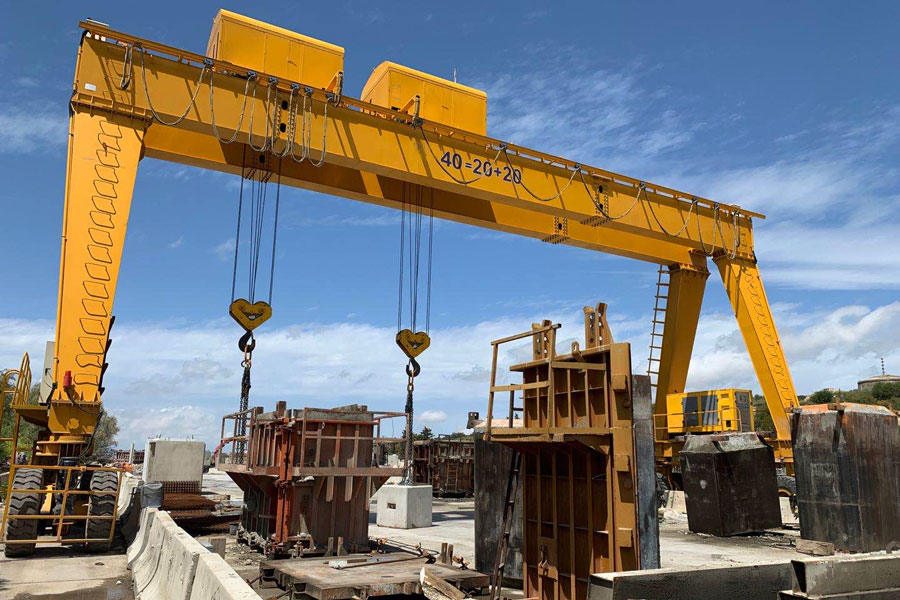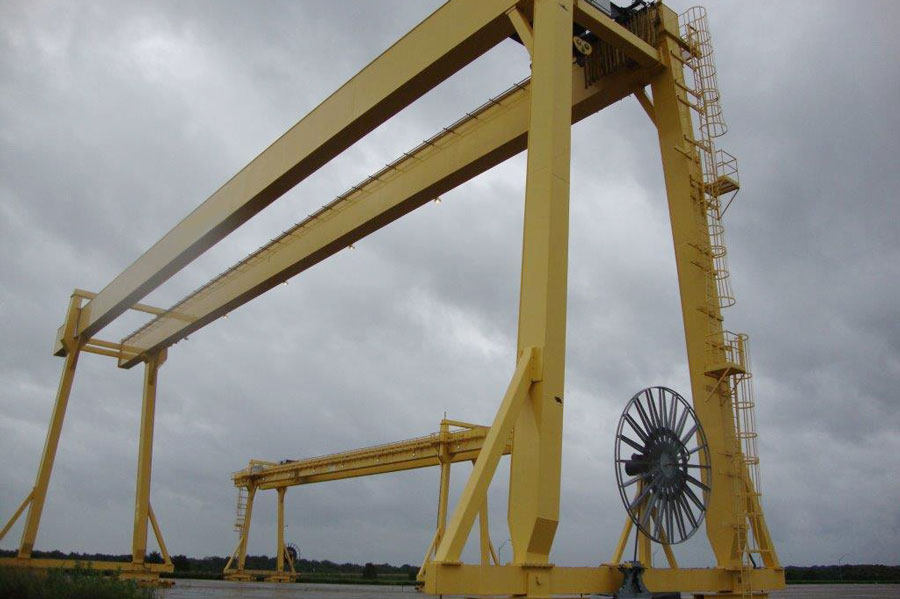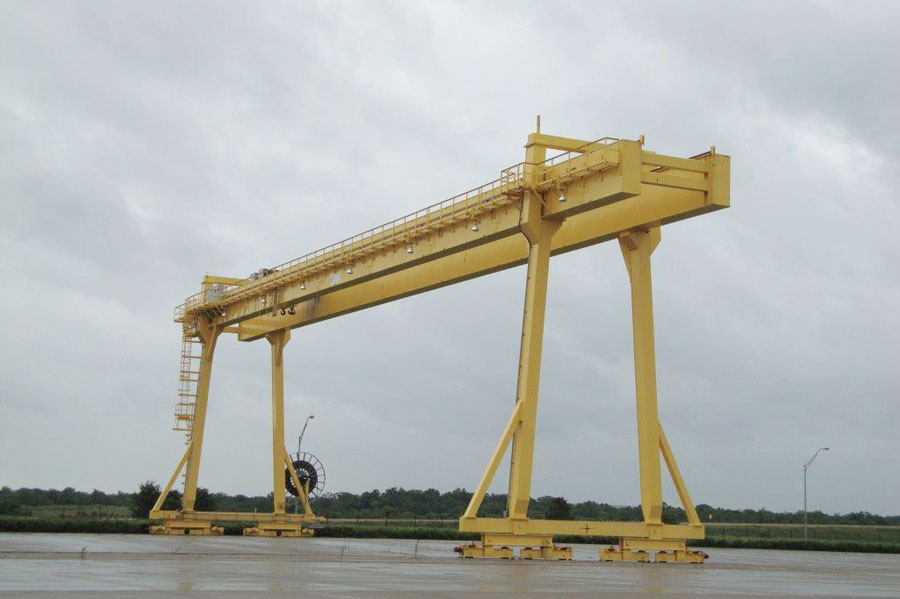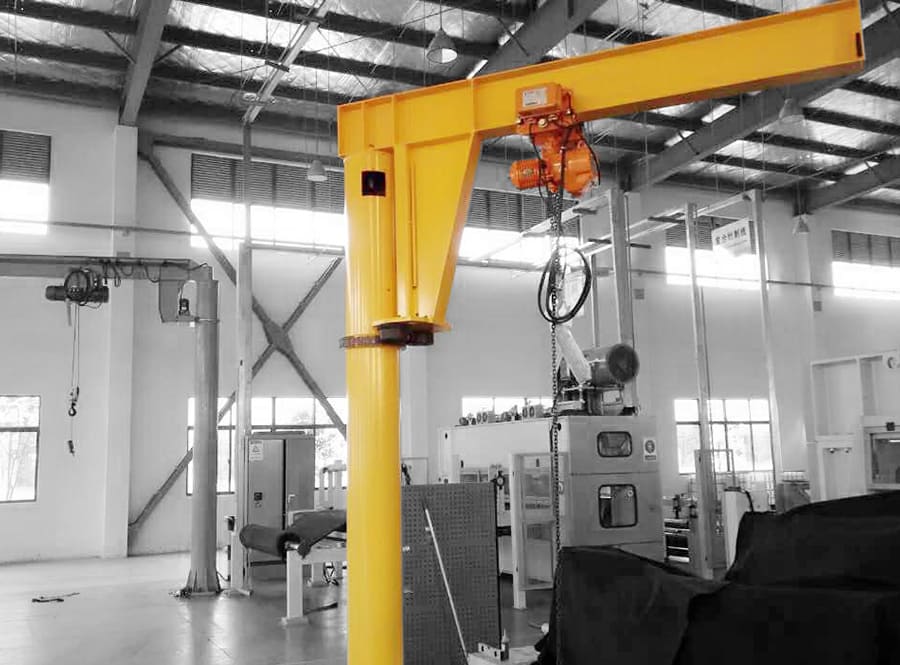A rolling gantry crane, also known as a mobile gantry crane, is a type of lifting equipment that is designed to provide versatility and mobility in industrial and commercial applications. It consists of a horizontal beam supported by vertical legs or columns, which are mounted on wheels. This design allows the crane to be easily moved and positioned in different locations within a facility or worksite. By the way, SEVENCRANE is a Chinese supplier rolling gantry crane factory, we have sold many types of gantry cranes to all over the world. If you want to know more detailed information about our products, please click the inquiry button on this website immediately.

SEVENCRANE rolling gantry crane manufacturer is typically used for lifting and moving heavy loads in areas where a permanent overhead crane system may not be feasible or practical. It offers a flexible solution for material handling tasks that require frequent relocation or where a fixed crane installation is not economically viable. One of the primary advantages of a rolling gantry crane is its mobility. The wheels attached to the vertical legs or columns enable easy movement and positioning of the crane. The wheels are often equipped with brakes or locking mechanisms to ensure stability and safety during operation. This mobility allows the crane to be used in various areas within a facility, optimizing workflow and reducing the need for multiple fixed cranes.
Rolling Gantry Crane Safety Operating Procedures
1. Each lifting machinery must be operated by a driver who has been trained, passed the assessment, and holds an operating certificate.
2. When the driver takes over, he should check the brakes, hooks, wire ropes and safety devices. If any abnormal performance is found, they should be eliminated before operation.
3. The driving track of the crane must be laid strictly in accordance with the technical requirements of the manufacturer. The track must have good grounding, the grounding resistance must not be greater than 10 ohms, and the limit device at the track terminal must always be kept intact.
4. Before driving, the bell or alarm must be sounded. When approaching people during operation, the bell or alarm must be sounded.
5. The operation should be carried out according to the command signal. No matter who sends the emergency stop signal, it should be executed immediately.
6. When performing maintenance, the driver should cut off the main power supply, put up a sign or lock it, and it must be powered on. When repairing, he should wear insulating gloves, wear insulating shoes, use tools with insulating handles, and be supervised.
7. Before homework:
① There should be a sufficient working surface for crane operations, there should be no obstacles within the lifting and landing radius of the overweight boom, and there should be sufficient lighting equipment at night.
② Before the operation, a comprehensive understanding of the surrounding environment of the site, driving roads, overhead wires, building scales, weight and distribution of components, etc. must be obtained.
③The crane’s amplitude indicator, torque limiter, and various travel limit switches and protection devices must be complete, sensitive and reliable, and it is strictly forbidden to use limit devices instead of control mechanisms to stop the crane.
④ Cranes are not allowed to operate close to overhead transmission lines. When they must operate beside the lines, safety protection measures should be taken. The safe distance between the crane and overhead transmission lines should not be less than 2m.
⑤ The specifications and strength of the wire rope used must meet the requirements of this type of crane. The manufacturer’s technical documents should be used as the basis for use, and the wire rope should be tested and must be qualified before use.
⑥The wire ropes on the drum should be firmly connected and arranged neatly. When the wire rope is paid out, at least three turns should be retained on the drum.
⑦ When the steel wire rope is fixed with rope clamps, the number shall not be less than 3. The length of the last clamp from the rope head shall not be less than 140mm. The rope clamp splint shall be on the side of the steel wire rope that is stressed, and the shaped bolt shall be at the end of the steel wire rope. It shall not Staggered forward and backward, the clamps should be tightened until the diameter of the two ropes is flattened by about 1/3. After the rope clamps are fixed, they should be tightened again after the steel wire rope is stressed.
⑧ Turn off the main power supply and place all controller handles in the zero position.
8. When working:
① Operators should give a warning signal before lifting, lowering, rotating, luffing, walking, etc. the crane hook.
② During operation, the operator and commander must cooperate closely. The commander must be familiar with the performance of the crane under command. The operator must strictly implement the command signal. If the signal is unclear or wrong, the operator may refuse to execute it.
③ No one is allowed to stay or pass under the heavy object, and it is strictly forbidden to use a crane to lift people. Our company is the CE approved rolling gantry crane supplier, welcome to inquiry our products.
④ Operators must operate according to the specified crane performance, and are not allowed to overload or lift objects of unknown weight. When overloading is required in special circumstances, technical measures must be taken to ensure safety, approved by the technical director of the enterprise, and have a dedicated person on site to monitor. before lifting.
⑤ It is strictly forbidden to use a crane, cable pull, diagonal lifting or lifting of heavy objects buried underground or condensed on the ground. Concrete components or formwork poured on site must be loosened before lifting.
⑥ The lifting and lowering speed of the crane should be uniform, and the left and right rotation movements should be balanced. Rapid, rapid, slow, and sudden braking are strictly prohibited. Reverse movements are not allowed before the rotation has stopped. Non-gravity non-lowering cranes are strictly prohibited from descending freely with load.
⑦ Each controller should be operated step by step, and over-blocking operations are strictly prohibited.
⑧When changing the running direction, the controller should be turned to the zero position, wait for the motor to stop rotating, and then turn the direction. Emergency opening and stopping are strictly prohibited during operation.
⑨ When the crane is lifting full load or close to the load, it should first lift the heavy object 200mm from the ground and stop. Check the stability of the crane, the reliability of the brake, the balance of the heavy object, and the firmness of the binding. Only after the inspection is correct, can the crane be lifted. Lift again. When there is a sudden power outage during work, all control handles should be returned to the zero position. Before resuming work, check whether the crane is operating normally.
⑩ Lifting heavy objects should be tied firmly to ensure stability. Heavy objects that may shake should be tied with pull ropes. No scattered objects should be stacked or hung on the lifting heavy objects.

9. After homework:
①After each working day, all visible parts of the steel wire rope and the connecting parts of the steel wire rope should be inspected. Any hidden dangers should be reported to the superior supervisor in a timely manner.
② After the operation, the crane hook is raised to the upper limit, the joystick is placed in the zero position, the power is cut off, and the cab doors and windows are closed.
③The crawler crane should be parked on a hard and reliable foundation.
④ During work and rest, heavy objects are not allowed to be suspended in the air.
⑤ Lower the boom to the maximum amplitude position, turn it to the downwind direction, and raise the empty hook to 56m from the top of the boom.
⑥ Carry out daily work in each part according to regulations, inventory tools, and conduct fire prevention inspections.
⑦ If the shutdown time is long, the traveling wheels of the trolley should be blocked with anti-climbing devices, the foot brake of the slewing mechanism should be braked with a heavy hammer, and the open gear half of the luffing mechanism should be blocked with a wooden mold.
Rolling gantry cranes find applications in a wide range of industries, including manufacturing, warehouses, construction sites, and workshops. They are commonly used for lifting and moving heavy equipment, machinery, containers, and other large or bulky items. The mobility and adaptability of the rolling gantry crane make it suitable for facilities with changing layouts or limited space. What’s more, SEVENCRANE european standard rolling gantry crane price is reasonable, and our crane quality is high. We can be your best choice.

In summary, a rolling gantry crane offers mobility, flexibility, and versatility in lifting and material handling applications. Its design allows for easy movement and positioning, enhancing productivity and optimizing workflow. With various configurations and lifting capacities available, it is a valuable asset in industries that require frequent relocation or temporary lifting solutions.






















